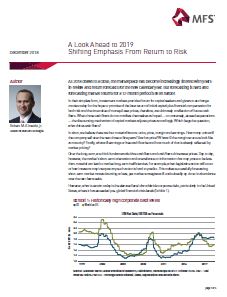
While the short term remains difficult to forecast, fundamentals drive cash flows and cash flows drive asset prices, and these fundamentals are units, price, margin and earnings.
What is certain today is the elevated level of worldwide corporate debt, particularly in the US, where it has exceeded pre–global financial crisis levels.
Many companies have resorted to using their balance sheets to sustain free cash flow growth levels, and the credit markets were willing financers thanks to central bank quantitative easing.
The overall quality of the corporate bond market deteriorated. The percentage of BBB-rated corporates in the Global Credit Index has almost doubled since the global financial crisis.
Whether credit concerns manifest themselves in 2019 or much later, leverage is the common concern across our global research platform because, in our view, highly leveraged companies have less control over their own destinies.
Without above-average unit sales growth or pricing power, margins and earnings will ultimately fall as input costs rise, as companies face higher interest rates when rolling over maturing low coupon debt.
Companies that have become less competitive in a digital economy will no longer benefit from leniency on the part of credit rating agencies. And their hunger for credit could come at a time when the bond market is experiencing indigestion. Funding rates, for some, may become operationally prohibitive, and many could become stressed. Under that scenario, asset selection will be critical, as differentiating between those companies with sustainable margins and those without will have a greater impact on portfolio returns than it has in recent years.
The combination of high corporate leverage and margins, against elevated cyclically-adjusted earnings multiples, is the source of our below-average 10-year return forecasts (at 4% in USD terms).
We believe investors should reorient their portfolio emphasis from above-average return generation to risk assessment.